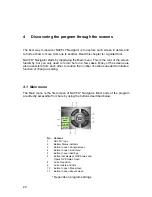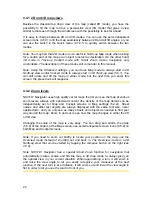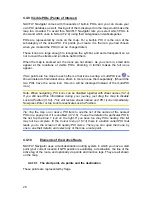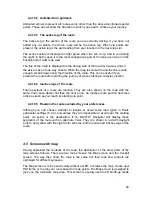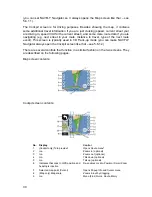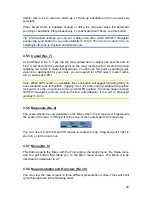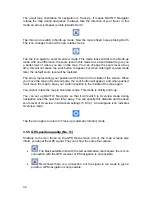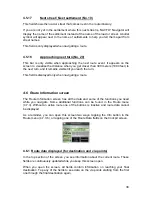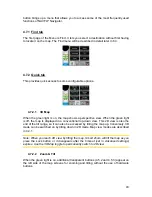
28
4.4.9 Visible POIs (Points of Interest)
NAVFLY Navigator comes with thousands of built-in POIs, and you can create your
own POI database as well. Having all of them displayed on the map would make the
map too crowded. To avoid this, NAVFLY Navigator lets you select which POIs to
show and which ones to hide (4.7.2.4) using their categories and subcategories.
POIs are represented by icons on the map. For a built-in POI it is the icon of the
subcategory of the actual POI. For points you create, it is the icon you had chosen
when you created the POI (it can be changed later).
These icons are large enough to recognize the symbol, and semi-transparent so as
not to cover the streets and junctions behind them.
When the map is zoomed out, the icons are not shown. As you zoom in, small dots
appear at the locations of visible POIs. Zooming in further makes the full icons
appear.
If two points are too close to each other so that icons overlap, a multi-POI icon
is
shown instead of individual ones. Zoom in more to see them separately. (Should the
two POIs have the same icon, this icon will be displayed instead of the multi-POI
icon.)
Note: When navigating, POI icons can be disabled together with street names (5.2.4).
If you still need this information during your journey, just drag the map to disable
Lock-to-Position (4.5.4). This will restore street names and POI icons immediately.
Now press Enter or tap Lock to reactivate Lock-to-Position.
Tip: Tap the map on or near a POI item to see the list of the names of the nearest
POIs in a popup list, if it is enabled (4.7.2.5). To see the details of a particular POI in
the list, tap the blue ’i’ icon on the right. If you have too may POIs nearby, this list
may not be complete. In the Cursor menu (4.5.13) there is a button called POI that
leads you to the screen of all nearby POI items. There you can open them one by
one to see their details, and select any of them as a route point.
4.4.10
Elements of the Active Route
NAVFLY Navigator uses a multi-destination routing system in which you have a start
point (your current location if GPS position is available), a destination, the line of the
active leg of the route, and optionally via points and inactive legs. They are all shown
on the map.
4.4.10.1 The start point, via points and the destination
These points are represented by flags.







